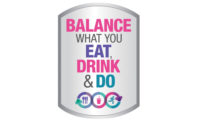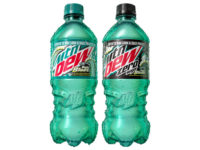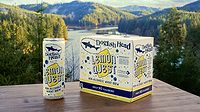![]()
Teens Make Statements Through Beverage Choices
By Sandy Parlin
Sigmund Freud asked, “What does a woman want?” If you think
that’s a tough question, try, “What does a teenager want?” Something to drink?
How about a glass of milk? “I can’t have a milk mustache — I have a date!” How
about a cola? “Don’t you have diet? I’ll get zits!” Bottled water? “That’s so
yesterday!” Apple, orange, cranberry juice? “Duh! I’m not a little kid. Forget
it. There’s nothing in this house to drink. I’m going out!”
A study by Teenage Research Unlimited (TRU) in Northbrook, Ill.,
reports that teens spent $175 billion in 2003, a 3 percent increase from 2002.
According to the October 2003 TRU Study, teens aged 12 to 19 spent an average
of $103 per week last year. This amount takes into account both teens’ own money
and the cash they receive from sources such as gifts, odd jobs and parents.
The aggregate spending increase is partially due to a rapidly expanding teen
population. The Census Bureau estimated the U.S. teen population numbered just
less than 33 million individuals in 2003.
According to TRU Vice President Michael Wood, teenage
consumers historically are more optimistic than the general population.
“Thanks to its unique circumstances — a great deal of
disposable income paired with fewer recurring debts — the teen
segment tends to have a much bolder attitude toward spending than does the
general population,” Wood says.
Teens’ confidence in their spending ability for
this year reflects that optimism. Forty-five percent of teens predict
they’ll spend more money in 2004, and 34 percent expect to spend
about the same. Only 21 percent anticipate spending less than they did in
2003.
Rob Callender, senior trends manager at TRU says, “Fall 2003
data indicates males have $83 per week at their disposal; females have $92 per
week. These figures include both their own money and money given to them by
parents.”
Females, he says, tend to drink waters, teas and diet
drinks, whereas males tend to consume sweeter drinks such as Mountain Dew,
Mountain Dew Code Red and root beer.
“According to our fall 2003 study, teens drank
an average of 11 soft drinks per week. Males reported consuming 12 soft
drinks, while females reported drinking just less than 11. In our study,
teens listed more than 55 drinks, from colas and diet soft drinks to water,
energy drinks and sports drinks,” says Callender.
Jennifer Goodman, managing director of The Geppetto Group, a
youth marketing consultancy and advertising company based in New York City,
says, “Beverage preference is a badge of independence, something teens buy using
their own money. Teenagers need to break away from their parents. They dress
in their own style and may experiment with drugs, alcohol and sexual activity.
Successful brands understand this.”
Goodman says Sprite captures the teen desire to break
away. Its “Obey Your Thirst” campaign mocks the establishment,
which appeals to teens who don’t want to conform.
She says the way teens experience a brand is as
important as the product itself. “Taste is a ticket to the game but
the imagery the beverage inspires is key. Gatorade is not a drink;
it’s an experience. It’s about being a player, part of the
team. Kids believe that if they drink Gatorade they are athletes,”
she says.
Another teen-inspired product Goodman cites is Sprite
Remix, a new tropical version of Sprite that is closely aligned with
hip-hop culture. The product is especially popular with suburban teens.
Hi-C Sour Blast, which is packaged in a juice pouch
with a patented flavor straw appeals to the extreme taste buds of teens.
The straw contains sour crystals that make the first few sips lip
puckeringly sour. Then the refreshing taste of Hi-C fruit drink returns as
the sour taste dissipates.
“The straw creates an experience with a brand. It’s all about
experimentation,” Goodman says.
A new product from Schroeder Co. in St. Paul, Minn.,
called Hyper Cow is said to make milk as cool as soda and energy drinks.
Made from 2 percent milk, Hyper Cow contains calcium, protein and vitamins,
but also provides energy in the form of caffeine. The product is available
in Chocolate Shock, Straight Up Strawberry and Mean Mocha Cappuccino
flavors, each with an edgy alter ego Mr. Money, Señor Suede and
Major Mojo, respectively. The target is on-the-go 15 to 25 year olds.
“Hyper Cow’s packaging was designed to embrace our target’s
irreverent sensibilities,” says Jill Schroeder, brand manager for Hyper Cow.
The full wrap label is a recreation of crumpled up notebook paper with hand-drawn
doodles or sketches and little written comments on everything from the real
milk seal to the UPC code. The fearless brand mascot, Hyper Cow, is drawn in
the perils of a number of extreme sports stunts.
“The more unique your product, the more
explicitly you can target your audience,” says Goodman. She points
out that understanding the audience psyche is essential to marketing to
savvy youngsters. And she says, successful brands usually don’t
target males or females; they develop universal targets.
“Unbridled consumer optimism, paired with a teen population
that will continue growing through 2010, makes teens an incredibly powerful
consumer group,” says TRU’s Michael Wood, who says teen marketing must be immediately
engaging and lifestyle-relevant or it will be dismissed immediately. “Marketers
are increasingly aware of this fact, and so are teens. Young people have grown
accustomed to marketers’ attention, and they’re demanding more of the messages
directed toward them.”



